Theseus
is a platform for designing modular electronic instruments. Building upon the Eurorack synthesizer standard, Theseus uses 3.5 mm patch cables to interconnect its modules. Unlike the Eurorack standard, this system is entirely digital and produces MIDI/OSC control messages. This simple alteration allows for more affordable module design and easier to understand schematics.
External Links
Video Documentation
Build Photos



Life Oranges
Life Oranges is the main trigger and gate signal generator for Theseus. The module produces five square waves. The topmost controller determines a main frequency. The remaining channels produce signals at varying divided rates of the main frequency. The value of each divisor is set by a corresponding rotary controller. These divided signals make it possible to develop rhythmic patterns, sync modules, and offset sequences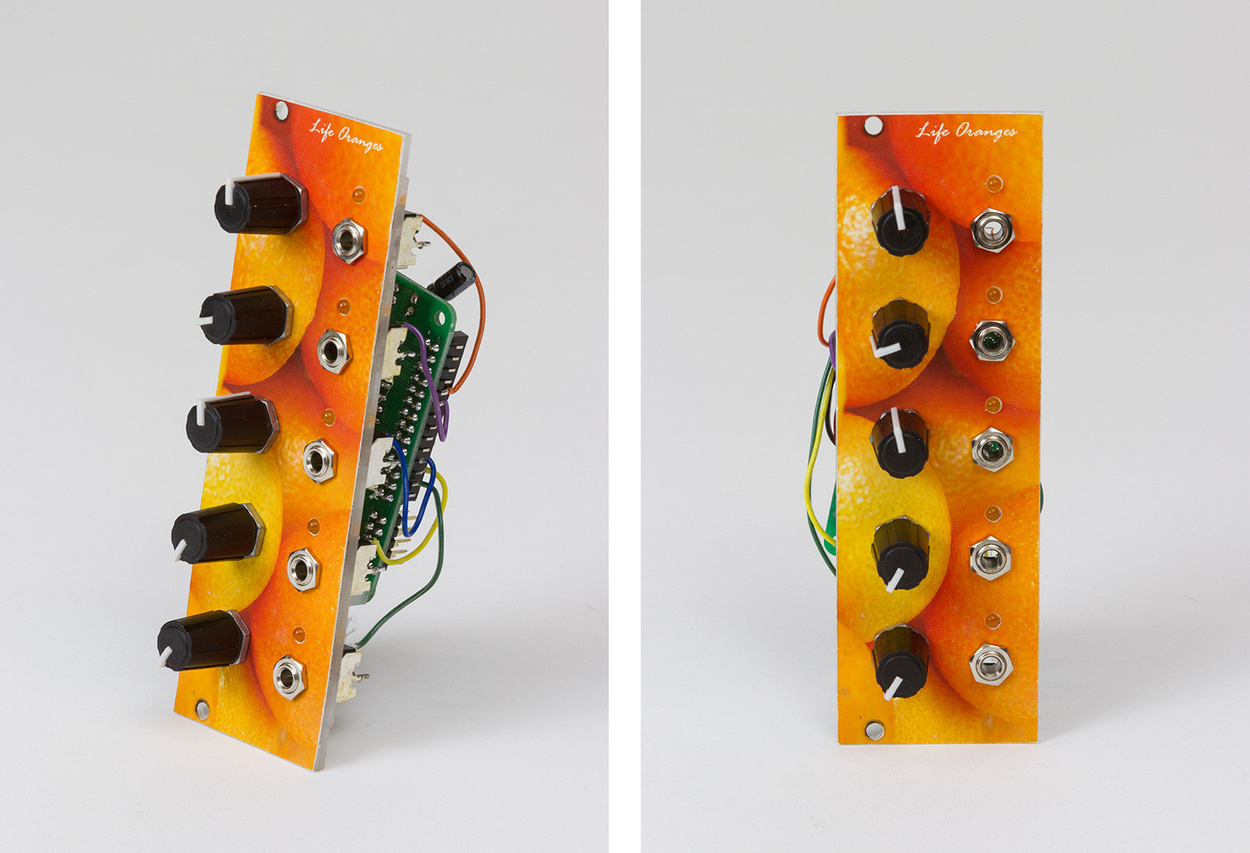
Don’t Care Now
Don't Care Now is a three-channel square wave generator with inputs for frequency modulation. The switch located on each channel toggles between coarse and fine frequency adjustments.
Wavefriends
Wavefriends takes the four output channels of Friendshaper and blends them together. The combined signals are either averaged or multiplied to create a new waveform as an output. The final rotary controller determines the ratio of how much either waveform is present. Wavefriends can be used to create interesting waveforms or as a mixing tool to smoothly transition between two input signals.

Ripple Me Timbers
Ripple Me Timbers is one of the more complex modules in Theseus. It records incoming waveforms and plays them back at a reduced speed. The playback speed is determined by a divided frequency rate. The result is a rhythmic harmonic of the input signal. An offset controller on each channel sets the starting point of each sample in relation to the original.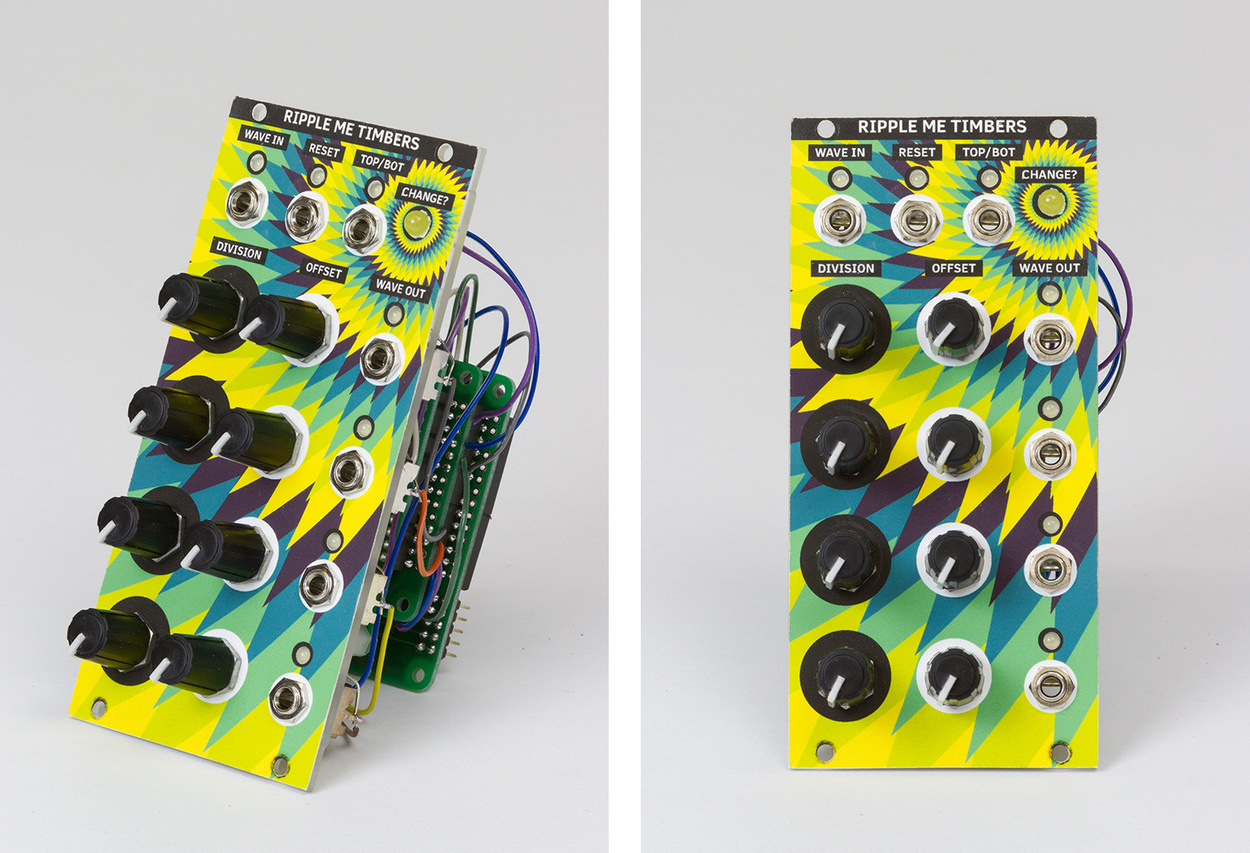
Muxquencer
The Muxquencer represents a union between a step sequencer and a multiplexer. Four binary selection inputs are used to route one of the sixteen steps to the module’s output. The order of the selection inputs can be permutated as well. Blue LEDs indicate the original selection while green LEDs represent the permutation. This allows for the same information to create two entirely different pattern sets. The permutation controller is also voltage controllable and opens the door to feedback loops within the module.
Eyes
Fire Emblem, a 2003 Gameboy Advance Game published by Nintendo and developed by Intelligent Systems, features a cast of armored warriors engaging in combat to save their world from the forces of evil. In dialogue scenes between combat events, four characters are presented from the chest up with text bubbles above whoever is currently speaking. During these scenes, characters will blink intermittently. These blinking events are the driving force behind the Eyes modules. An hour long portion of the game was recorded using screen capture software. Processing was then used to count the milliseconds between each character's blinks to produce a data table. This data table was then uploaded as to the module’s microcontroller. The blinking LEDs on Eyes are perfect copies of the original blinks found in the game.

Lowfo
Lowfo is a four-channel low frequency oscillator. Each channel is capable of producing square, triangle, ramp, sawtooth, and random waveforms. The frequencies of the oscillators are determined first by a rotary controller and second by a modulation input. Waveforms are selectable by a small pushbutton. The leftmost and rightmost oscillators can have their signals reset by an external trigger.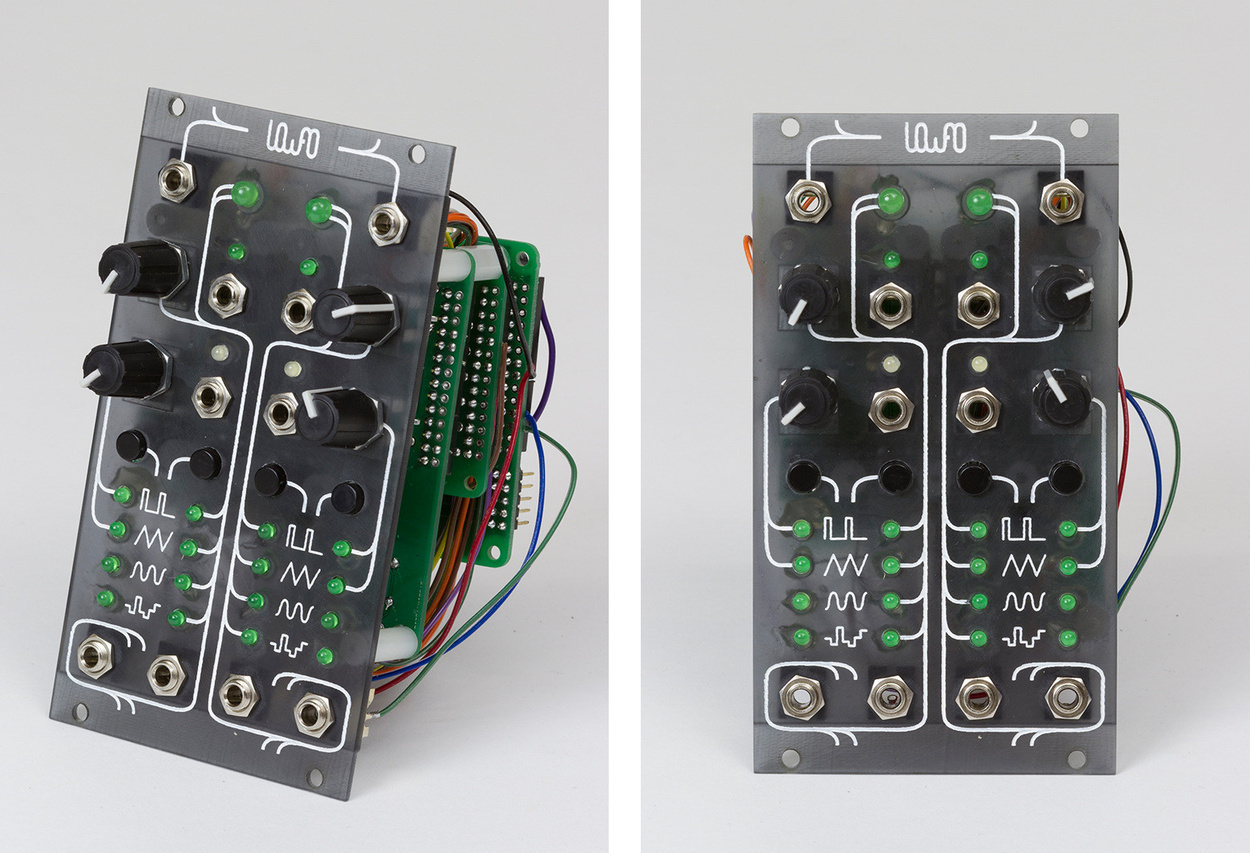
World Clock
World Clock is a simulation of global birth rates. Data points from the United Nations Children's Fund's 2013 Report were used to calculate the frequency at which births occur in a variety of places across the planet. LED flashes indicate live births in simplified real-time for the year 2013.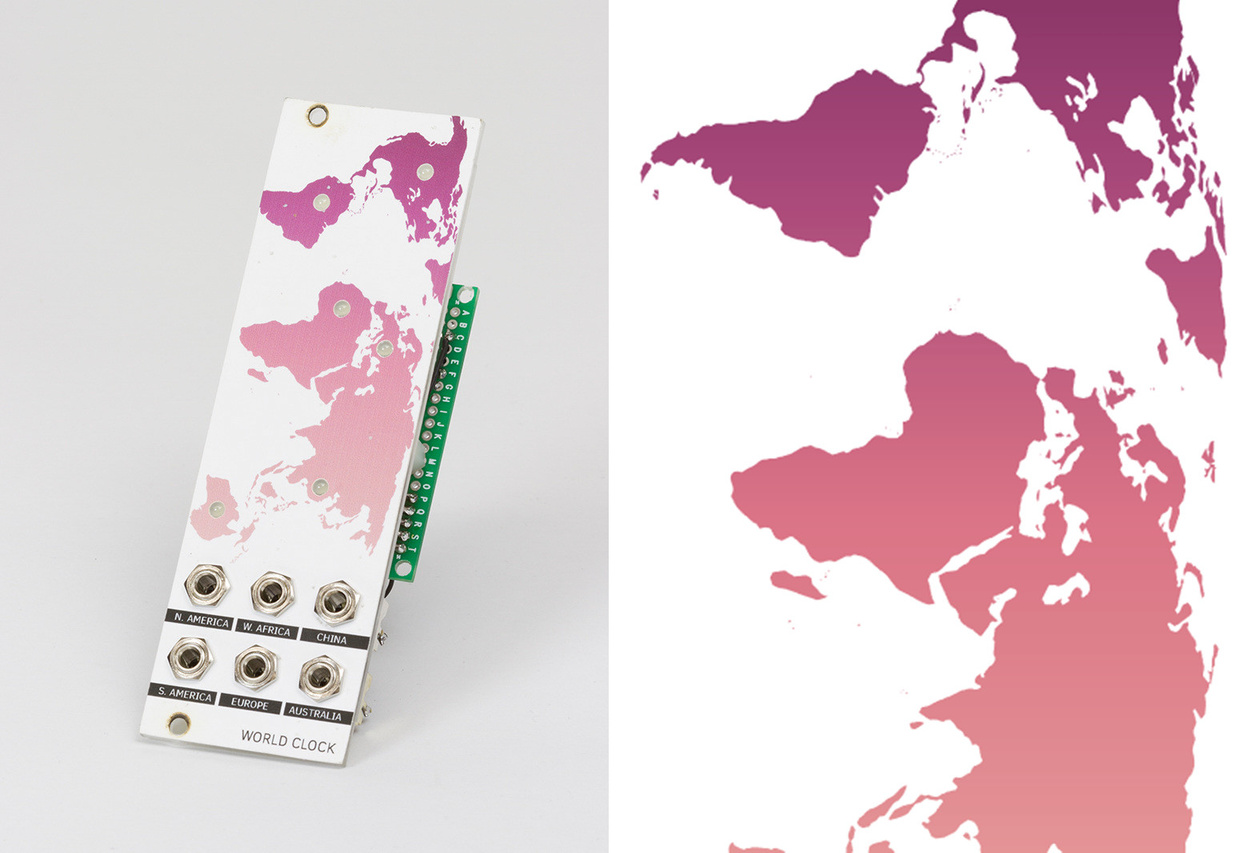
Neat TV
Neat TV is the only utility module on Theseus. It acts as an oscilloscope by receiving waveforms and producing a graphic visualization. Neat TV supports two voltage inputs, each with a bypassed output and individual refresh control rates.
Logic Matrix
The Logic Matrix accepts signals on each of its axes. A logic operation at the X and Y coordinates of the inputs is performed and a processed signal is output. The Logic Matrix offers AND, OR, NOR, NAND, XOR, XNOR, and NOT logic functions with the last pertaining exclusively to inputs on the X axis.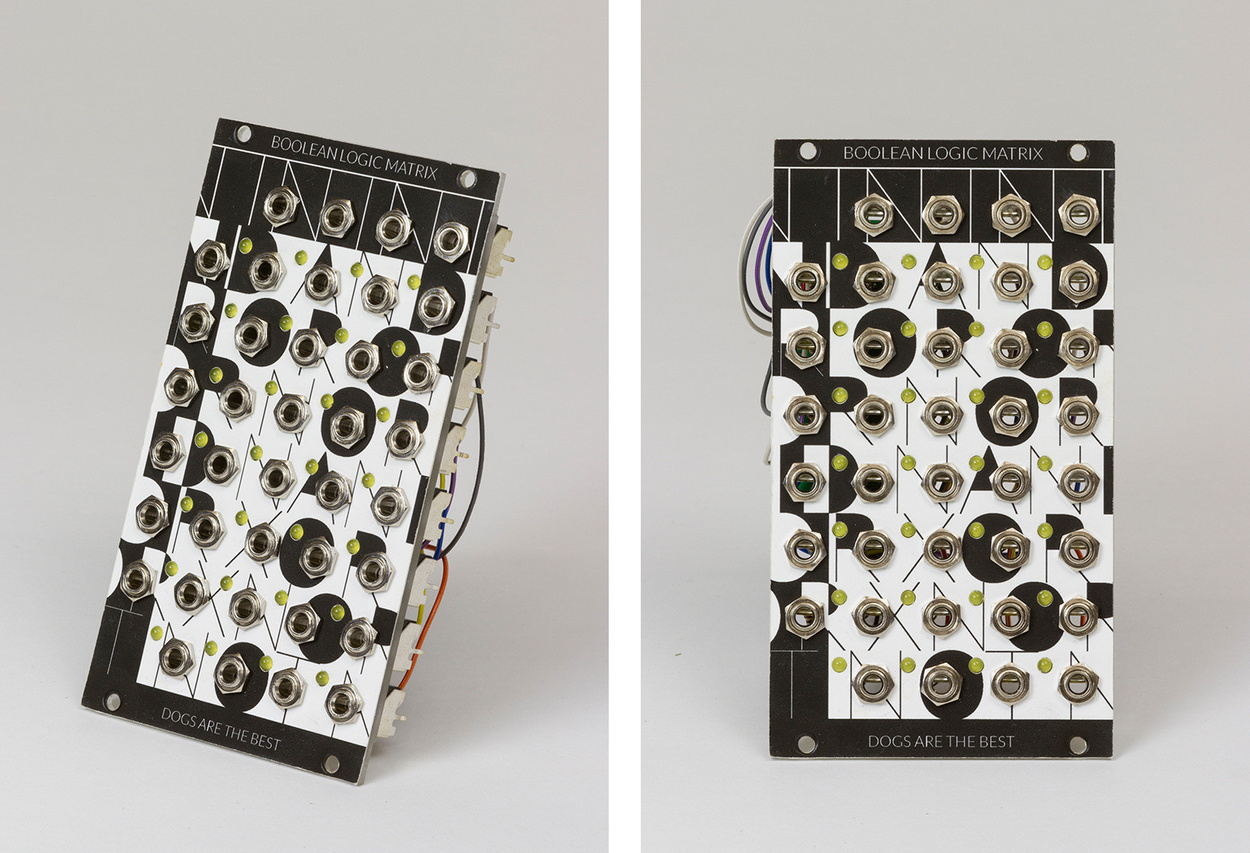
Maht Dvdr
Maht Dvdr is driven by a master clock signal. With each trigger it receives, an onboard counter increases by one. Sixteen frequencies, each a division of the current counter value, run in the background. These channels are accessed and routed to each output using three inputs. The first receives a voltage that determines which of the ten output positions to select. The second determines what divided frequency to assign to that output. Lastly, a latch input locks the selected divided frequency to the selected output channel.
Missing No.
Missing No. is the strange mutable module of the collection. It uses both literal and random routing systems to generate outputs.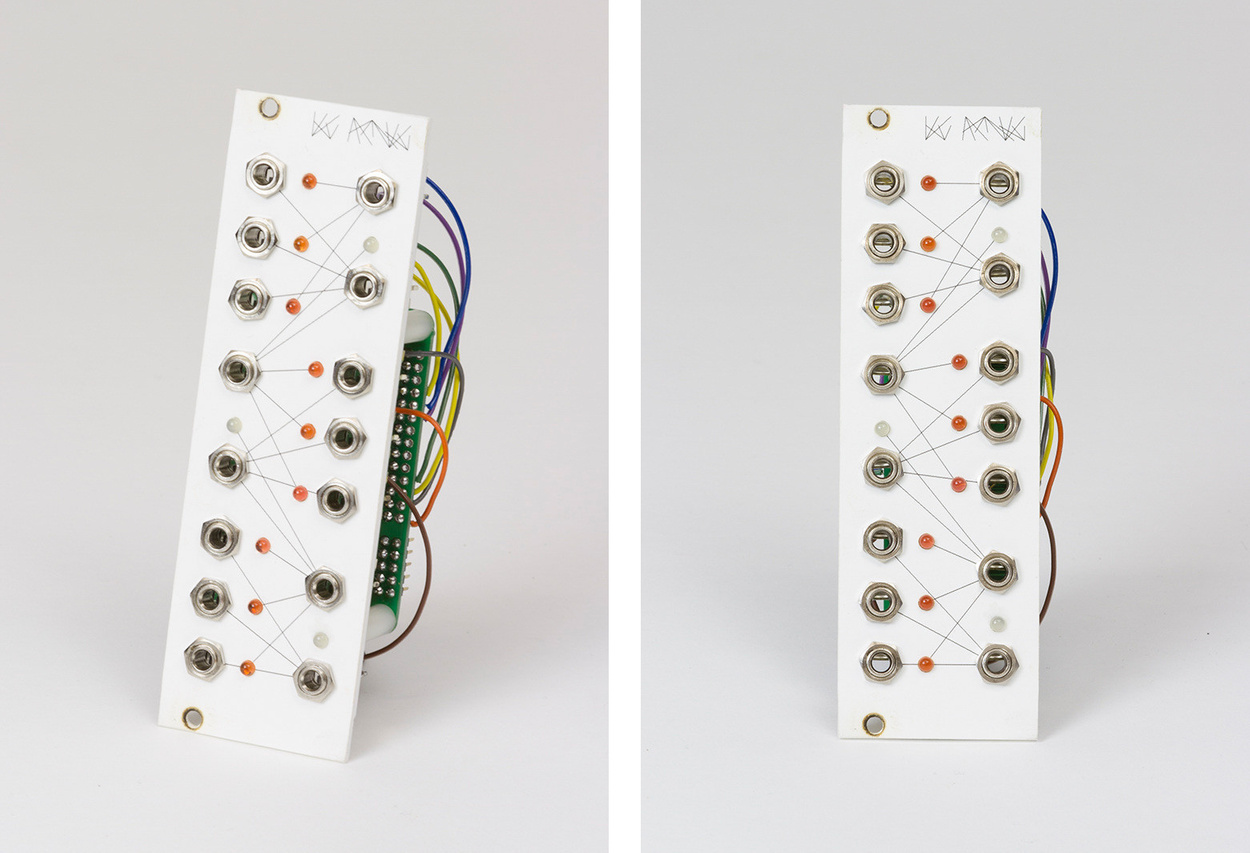
Mandalatron
Mandalatron is a four-channel ten-step sequencer. Each channel possesses the same values set by the ten central rotary controllers, but with isolated clocks and sequence lengths. When the clock input is triggered, the sequence will advance by one step and reset to the first step at the point designated by the sequence length controller.